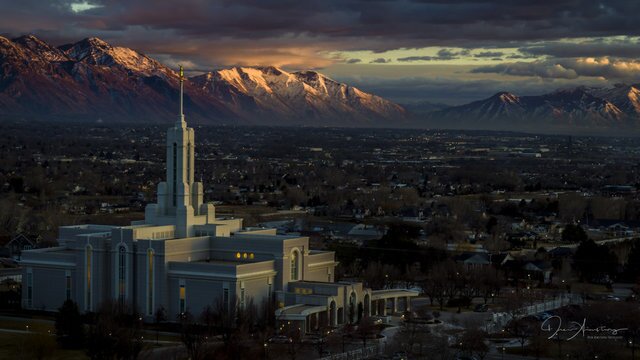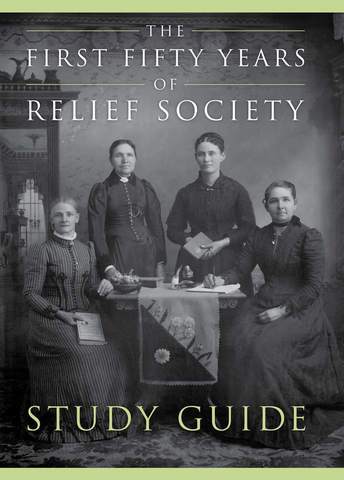Editor’s note: This article originally ran on LDSLiving.com in February 2019.
“You, my sisters, if you are faithful will become Queens of Queens, and Priestesses unto the Most High God. These are your callings.”
—Eliza R. Snow (The First Fifty Years of Relief Society, 3.23, 388)
Restoration of that which had been lost was central to Joseph Smith’s mission—including the authorized power of God with the priesthood. In 1829, John the Baptist restored long-lost priesthood keys to Joseph Smith and Oliver Cowdery. Peter, James, and John followed with keys of the higher priesthood; after the completion of the Kirtland Temple, Joseph Smith and Oliver Cowdery received further keys, including the power to seal from Elijah. This process would continue. Smith taught the newly initiated sisters of the Nauvoo Relief Society that their organization restored another ancient institution essential to the Church of Christ. The beginning of the section of the introduction to First Fifty Years titled “Ministering with Authority” aids us in considering how the Relief Society structure was “patterned after the order of the priesthood” (xxiv-xxxiv).
The Relief Society intricately linked with priesthood offices instituted the “proper order” for God to reveal comprehensive temple ordinances (FFY 1.2.7, 54). The restoration of these offices and the access to priesthood power to both males and females were essential so that Joseph could make “a kingdom of priests as in Enoch’s day—as in Paul’s day” (FFY 1.2.3, 43). Priesthood power was offered to all the Saints through the restoration of priesthood authority and structure, Relief Society organization, and the culminating ordinances of the Melchizedek Priesthood, which would eventually be available to all in the House of the Lord.
As was his pattern in the last few years of his life, Joseph taught essential truths to small groups fully intending that they would expand those teachings to others later and eventually bring all into the order of the ancient priesthood. He “turned the key to [the Relief Society officers] in the name of God,” offering them authority to direct (FFY 1.2.7, 59). Shortly after the organization of the Relief Society in the upper room of Smith’s Red Brick Store, he introduced the full temple endowment to others in his inner circle in the same location, first to men and then to women the following year, creating the “perfect” order of the restored Church.1 With Emma Smith officiating, Mercy Fielding Thompson was one of the first women to receive her endowment; Mercy remembered Joseph telling her, “This will bring you out of darkness into marvelous light.”2
► You'll also like: 5 ways women are already given priesthood authority & officiate in priesthood ordinances in the Church
Joseph Smith began to teach the relationship of the Relief Society to the priesthood in the initial 1842 meetings. Speaking to women the following year, Nauvoo temple committee member Reynolds Cahoon reiterated the connection Joseph had established: “You kneed no doubt [that] this society is raisd by the Lord to prepare us for the great blessings which are for us in the House of the Lord in the Temple” (FFY 1.2.26, 113). The connection of priesthood, Relief Society, and temple would be reiterated and further explained over the next fifty years.
Eliza’s record of the inaugural Relief Society minutes became key to passing on this knowledge. Bathsheba W. Smith was an original member of the Nauvoo Relief Society, as well as a one of the first women to receive the temple endowment. In 1905, as General President of the Relief Society, she reminded the sisters that Joseph Smith “wanted to make us, as the women were in Paul’s day, ‘A kingdom of priestesses.’ We have that ceremony in our [temple] endowments as Joseph taught.”3 Women would receive the earthly culmination of Melchizedek Priesthood ordinances in the temple as well as officiate in ordinances there.
Former Relief Society General President Linda K. Burton recently challenged us to memorize the oath and covenant of the priesthood as well as Joseph’s teachings on priesthood power from Liberty Jail (see D&C 84:31-44; 121:34-37) She encouraged: “We hope to instill within each of us a greater desire to better understand the priesthood.”4 Then-Elder Oaks offered a second witness to the truth and significance of Sister Burton’s hope and reinforced it, declaring, “That need applies to all of us.”5 Priesthood “is without beginning of days or end of years” (D&C 84:17); we don’t master it in a day or a year. This is a lifetime pursuit, and First Fifty Years offers us patterns to emulate in that quest.
Female Relief Society of Nauvoo Minutes, 27 May 1842 (1.2.11)
The ordinances of the Kirtland Temple were offered only to men. However, Joseph Smith included women and men in Nauvoo Temple ordinances. Joseph first introduced the endowment on 4 May 1842 in his Red Brick Store to a small group of men, including Newel K. Whitney. Three weeks later, Newel visited the Relief Society, where he celebrated the restoration of this ancient organization, “that we might improve upon our talents and to prepare for those blessings which God is soon to bestow upon us.” He referred to those ordinances he had just received and that would be soon introduced to women. With clear enthusiasm, Whitney reflected on worthiness as well as the incomparable opportunity for learning in the temple. In 1832, Joseph had revealed that the “greater priesthood administereth the gospel and holdeth the key of the mysteries of the kingdom, even the key of the knowledge of God” and that “in the ordinances thereof, the power of godliness is manifest” (D&C 84:19-10). The Melchizedek Priesthood ordinances opened the way for mysteries to be revealed—even a knowledge of God as well as a pathway to become like God. Elder David E. Sorenson of the Seventy elaborated, “Each ordinance is calculated to reveal to us something about Christ and our relationship to God.”6 Whitney taught the sisters that women were essential in that undertaking: “Without the female all things cannot be restor’d to the earth, it takes all to restore the Priesthood.”
► You'll also like: Elder and Sister Renlund: 4 ways women exercise priesthood power and authority
How do you learn of godliness? How do ordinances teach you how to become like God? What covenants have you made in these sacred ordinances? How is the temple connected to you personally knowing God? How do you prepare to receive and participate in priesthood ordinances? How does that knowledge change you and your daily life?
Franklin D. Richards, Discourse, 19 July 1888 (4.20)
In July 1877, Jane Snyder Richards was called as the first stake Relief Society president in Ogden (see FFY 3.26 and 3.28). Eleven years later, the stake Relief Society held a memorial event. Several talks were given, including a short speech by Jane and an address by her husband and stake president, Franklin D. Richards. His talk included lofty goals as well as commonsensical advice and doctrine. He quoted Joseph Smith’s initial teachings to the Relief Society and illustrated “how the Sisters would come in possession of the privileges & blessings & gifts of the priesthood.” He instructed, “Our sisters share with us any and all of the ordinances of the holy anointing, endowments, sealings, sanctifications and blessings” of which we are able to partake.
In this instance, Franklin spoke about the ideal of priesthood and recognized mortal fallibility. In the first part of his talk, Franklin pragmatically noted that there were times when women in the Church would meet opposition from and have difficulties with “the brethren.” He also acknowledged that for some women it was difficult to be an active participant in public settings. He pled with the women of the stake to not be “intimidated” or “afraid to go ahead and do anything without instructions,” but that they should move forward. He promised them, “God will sanctify your labors to the good of your sisters, and also the good of the brethren” (FFY 4.20, 546-47). His suggestions speak to us today.
How do we recognize the authority and power that we have been given to act in our current calling? How can we speak up in ward council and in administrative meetings? How do we deal with other flawed mortals when conflict arises? How do we move forward despite mortal failings? What does this teach us about the power of God, priesthood offices, and the role of women?
Lead image by Drew Armstrong Photography
Buy The First Fifty Years of Relief Society and Receive the Digital Study Guide Free!
To get your free Study Guide ebook, add the hardcover book to your cart. The Study Guide ebook will be automatically added to your cart. Then when you check out, the promo code will be automatically applied on the Purchase page.
The First Fifty Years of Relief Society
Additional Reading
“Joseph Smith’s Teachings about Priesthood, Temple, Women,” Gospel Topics Essay.
Linda K. Burton, “Priesthood: A Sacred Trust to be Used for the Benefit of Men, Women, and Children,” BYU Women’s Conference, August 2013.
Dallin H. Oaks, “The Keys and Authority of the Priesthood,” Ensign, May 2014.
Notes
1. Carol Cornwall Madsen, “Mormon Women and the Temple: Toward a New Understanding,” in Maureen Ursenbach Beecher and Lavina Fielding Anderson, eds., Sisters in Spirit: Mormon Women in Historical and Cultural Perspective (Urbana: University of Illinois Press, 1992), 80-110.
2. “Recollections of the Prophet Joseph Smith,” Juvenile Instructor 27, no. 13 (July 1, 1892): 400.
3. “Pioneer Stake,” Woman’s Exponent, July and August 1905, 34:14.
4. Linda K. Burton, “Priesthood: A Sacred Trust to Be Used for the Benefit of Men, Women, and Children,” BYU Women’s Conference, August 2013.
5. Dallin H. Oaks, “The Keys and Authority of the Priesthood,” Ensign, May 2014.
6. David E. Sorenson, “Small Temples—Large Blessings,” Ensign, November 1998.
7. See Virginia H. Pearce, “Angels and Epiphanies,” and Sheri Dew, “What Joseph Smith Taught Women and Why It Matters,” in The Beginning of Better Days: Divine Instruction to Women from the Prophet Joseph Smith (Salt Lake City: Deseret Book, 2012), 1-33; 34-86.



